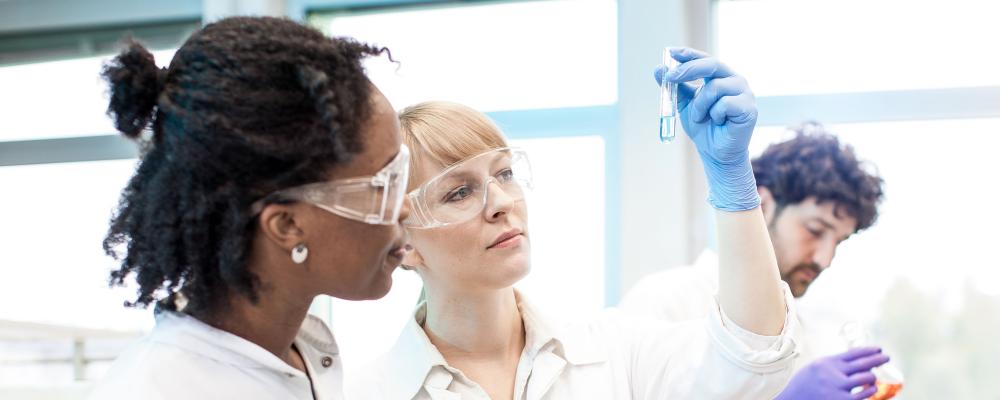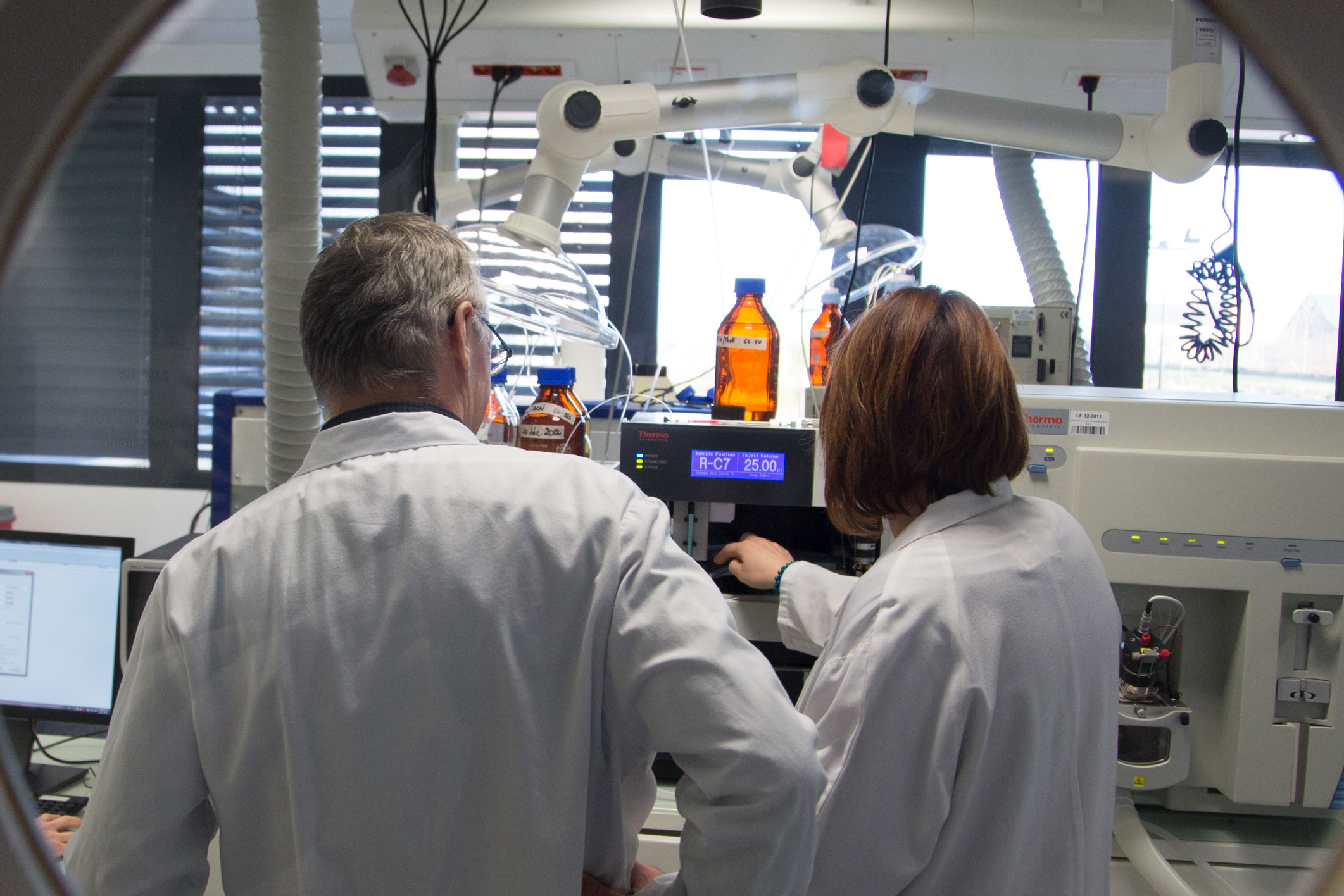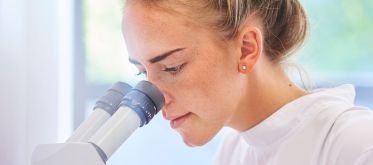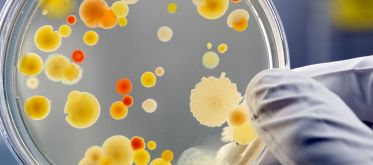Portal Our Laboratories


Fougères Laboratory
Laboratory Director: Tahar Ait Ali
Address: 10B rue Claude Bourgelat, PA de la Grande Marche, Javené CS 40608 35306 Fougères Cedex
Email: Contact.laboratoiredefougeres@anses.fr
Tel: +33 (0) 2 99 17 27 47
Team: 65 people, spread out across four research units
The laboratory's missions
The Fougères Laboratory operates in the areas of food safety, veterinary medicine and food hygiene.
The laboratory’s mission is to further knowledge of the benefits and risks of veterinary medicinal product and disinfectant use by the food processing industry. It also analyses the effects of antibiotics and biocides on antimicrobial resistance and characterises the toxicological hazards associated with contaminants. Moreover, the laboratory develops new tools for predicting the toxicity of these products.
The laboratory’s work focuses on:
- screening for residues of veterinary medicinal products in foodstuffs of animal origin;
- the antimicrobial effectiveness of antibiotics and disinfectants;
- the resistance of bacteria to these products;
- evaluating the toxicity of contaminants.
The laboratory is the National Reference Laboratory for veterinary medicine residues and antimicrobial resistance. It is also the European union Reference Laboratory for antimicrobial and dye residues.
To know more about the Laboratory
>> See the leaflet (PDF)
Latest laboratory news

Mould in food: identifying mutagenic and carcinogenic toxins
The combined use of several different software applications could speed up the acquisition of knowledge on toxins known as mycotoxins, which are produced by certain types of mould growing in food. This innovative approach has been used by ANSES scientists to identify mycotoxins that may be mutagenic and/or carcinogenic.
The laboratory's units
Antibiotics, Biocides, Residues and Resistance (AB2R) Unit
The missions of the Antibiotics, Biocides, Residues and Resistance Unit are as follows:
- evaluating and validating screening methods for veterinary medicinal product residues (antibiotics and dyes with pharmacological activity);
- developing methods for detecting disinfectant biocide residues;
- organising and participating in inter-laboratory trials;
- performing in vitro tests on susceptibility to antibiotics and biocides;
- assessing the efficacy of biocides and antibiotics;
- characterising genes for resistance to antibiotics and biocides, and their genetic support;
- studying the impact of disinfectant biocidal treatments and alternatives on microbial ecology and mechanisms of resistance to biocides, metals and antibiotics.
The Actia Fastypers Joint Technology Unit
The Actia Fastypers Joint Technology Unit (UMT) brings together teams from ANSES, INRAE and agro-industrial technical institutes (Actalia - dairy sector and the Institut du porc [IFIP]). Two ANSES teams are involved: the Salmonella & Listeria unit of the Food Safety Laboratory and the Antibiotics, biocides, residues & resistance unit of the Fougères laboratory.
The activities of the Actia Fastypers UMT are devoted to Listeria and Salmonella, two bacteria of animal origin responsible for diseases in humans and transmitted through food. One of the unit's objectives is to understand the mechanisms by which Listeria and Salmonella bacteria manage to adapt and persist in the external environment, including in food processing plants, and how certain strains are resistant to biocides. The second objective is to develop tools to characterise and detect these persistent bacterial strains, so that the cleaning and disinfection process can be adapted.
Experimentation, Modelling and Data Analysis (EMAD) Unit
The Experimentation, Modelling and Data Analysis Unit has the following missions:
- organising experiments on livestock and small animals, involved in different projects assigned to and/or run by the Fougères Laboratory. The management of animal housing and the treatment of animals are described in a quality plan;
- assisting in setting up experimental plans and conducting statistical analyses at the request of the laboratory’s units, other ANSES teams, or teams outside ANSES;
- coordinating ANSES’s statistical analysis platform;
- implementing biokinetics projects (i.e. on the absorption, distribution and elimination of substances) and developing biokinetic modelling tools;
- following up on requests for inter-laboratory trials as part of its national and European reference activities relating to veterinary medicinal product residues;
- monitoring samples for testing and those produced in the framework of inter-laboratory proficiency tests (ILPTs) for veterinary medicinal product residues, in order to produce reference materials;
- coordinating proficiency tests defined in the programme on veterinary medicinal product residues.
Analysis of Residues and Contaminants (ARC) Unit
The missions of the Analysis of Residues and Contaminants Unit are to:
- develop and validate physico-chemical methods (HPLC, MS, LC-HRMS) to test for chemical residues in complex matrices, in particular for national (NRL) and European (EURL) reference activities for veterinary medicinal product residues;
- transfer control methods to networks of official laboratories;
- perform official reference analyses (NRL and EURL);
- characterise exposure related to the use of veterinary medicinal products and biocides, by producing knowledge on sources, transfers and the fate of substances;
- develop new analytical approaches based on high-resolution mass spectrometry.
Toxicology of Contaminants (TC) Unit
This unit’s missions are to:
- develop and adapt in vitro and in vivo cytotoxicity and genotoxicity tests for plastic, nanoparticles and toxins;
- determine the effects of contaminants using different markers of in vitro and in vivo toxicity;
- perform in vitro toxicokinetic (science of the absorption, distribution and elimination of substances) tests;
- participate in scientific expert appraisals in the field of toxicology.
Partnerships
Principal national partners
- French Standardisation Association (AFNOR)
- French Health Products Safety Agency (ANSM)
- Agrocampus Ouest
- Biogenouest
- Technical centres (ACTALIA, ADRIA Quimper, French Pork and Pig Institute, AFISE, etc.)
- EHESP (School for Advanced Studies in Public Health)
- National Veterinary School of Toulouse
- Nantes Oniris Veterinary School
- Federations of hygiene product manufacturers
- Fougères urban area
- Phycotox Research Group
- French Research Institute for Exploitation of the Sea (Ifremer)
- French National Research Institute for Agriculture, Food and the Environment (INRAE)
- National Institute of Health and Medical Research (Inserm)
- French Research Institute for Development (IRD)
- French Ministry of Agriculture and Fisheries - French Directorate General for Food
- French Natural History Museum
- Public-private platform for the pre-validation of endocrine disruptor characterisation methods (PEPPER platform)
- Brittany Region
- Network of Departmental Analysis Laboratories for veterinary medicinal product residues
- Network of Interprofessional Dairy Laboratories for the control of antibiotic residues in raw milk
- Network of approved departmental laboratories for antimicrobial resistance
- University of Rennes 1 (Doctoral School – Biology & Health)
Principal international partners
- European Medicines Agency (EMA)
- International Atomic Energy Agency (IAEA)
- Association of Official Analytical Chemists (AOAC) International and Europe Section
- European Food Safety Authority (EFSA)
- Federal Institute for Risk Assessment (BfR), Germany
- Directorate-General for Enlargement of the European Commission
- Directorate-General for Health and Food Safety (DG Santé) of the European Commission
- Federal Office of Consumer Protection and Food Safety, Germany
- European Regional Development Fund (ERDF)
- International Dairy Federation (FIL-IDF)
- Institut Pasteur in Tunis (Tunisia)
- Istituto Superiore di Sanita (ISS), Italy
- Network of National Reference Laboratories of EU Member States for veterinary medicinal product residues
- North American Chemical Residue Workshop (NACRW), United States
- Norwegian Institute for Air Research (NILU), Norway
- Food and Agriculture Organization (FAO)
- Ospedale Pediatrico Bambino Gesù-IRCCS (OPBG), Italy
- University of Santiago de Compostela, Spain
- Wageningen Food Safety Research (WFSR), Netherlands



